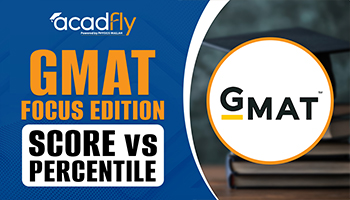

PTE syllabus 2025: Pearson Test of English Academic (PTE Academic) is an English language proficiency test accepted by academic institutions and governments worldwide. It's designed to evaluate candidates' command of the English language in real-world and academic contexts. If candidates plan to study or work abroad, a good PTE score is important. To score well in the test, understanding the detailed PTE syllabus 2025 is the first and most important step.
The section below offers a complete breakdown of the latest PTE syllabus, test structure, question types, scoring methods, preparation strategies, and key resources.
PTE Syllabus 2025
Before starting the PTE preparation, it's important to know the syllabus structure. The PTE 2025 syllabus outlines the tasks and skills assessed in each section of the test. It gives candidates a blueprint to organize their study plan efficiently and helps them identify which areas need more focus. The table below contains three main sections of the exam and what they evaluate.
|
PTE Syllabus 2025 |
|||
|---|---|---|---|
|
Section |
Skills Assessed |
Number of Tasks |
Duration |
|
Speaking & Writing |
Speaking & Writing |
7 task types |
54–67 minutes |
|
Reading |
Reading |
5 task types |
29–30 minutes |
|
Listening |
Listening |
8 task types |
30–43 minutes |
PTE Exam Section-wise Syllabus
To prepare effectively for the PTE Academic, it is important to understand the structure and expectations of each exam section. The test is divided into three primary sections, which include Speaking & Writing, Reading, and Listening. All are designed to determine a range of English language abilities relevant to academic and professional areas. Check the breakdown below of PTE exam syllabus section-wise, including all task types, their purpose, and the skills they measure.
Speaking and Writing (54–67 minutes)
This section tests candidates' ability to create spoken and written English in an academic environment. Tasks here examine pronunciation, fluency, grammar, and vocabulary.
Task Types in this Section:
Personal Introduction (not scored): A short self-introduction is used for university admission purposes.
Read Aloud: Read a text aloud. Tests reading and speaking skills.
Skills assessed: Reading, Speaking
Repeat Sentence: Listen to a sentence and repeat it.
Skills assessed: Listening, Speaking
Describe Image: Describe a chart, graph, map, or picture.
Skills assessed: Speaking
Re-tell Lecture: Summarize a spoken lecture.
Skills assessed: Listening, Speaking
Answer Short Question: Respond briefly to a general knowledge question.
Skills assessed: Listening, Speaking
Summarize Written Text: Summarize a passage in one sentence.
Skills assessed: Reading, Writing
Essay Writing: Write an essay of 200–300 words on a given topic.
Skills assessed: Writing
Reading (29–30 minutes)
This section determines a candidate's ability to understand written academic English. Some tasks also involve grammar and vocabulary understanding.
Task Types in this Section:
Reading & Writing: Fill in the blanks using drop-down menus.
Skills assessed: Reading, Writing
Multiple Choice, Multiple Answers: Choose more than one correct answer.
Skills assessed: Reading
Re-order Paragraphs: Arrange the text boxes in the correct sequence.
Skills assessed: Reading
Fill in the Blanks: Drag and drop words into blanks in a passage.
Skills assessed: Reading
Multiple Choice, Single Answer: Select one correct response to a question.
Skills assessed: Reading
Listening (30–43 minutes)
This section tests candidates' ability to understand spoken English in lectures and conversations.
Task Types in this Section:
Summarize Spoken Text: Summarize audio in 50–70 words.
Skills assessed: Listening, Writing
Multiple Choice, Multiple Answers: Choose all the correct responses based on the audio.
Skills assessed: Listening
Fill in the Blanks: Listen to the audio and type the missing words.
Skills assessed: Listening, Writing
Highlight Correct Summary: Choose the best summary of the recording.
Skills assessed: Listening, Reading
Multiple Choice, Single Answer: Select the best answer from the options.
Skills assessed: Listening
Select the Missing Word: Identify the missing word in the recording.
Skills assessed: Listening
Highlight Incorrect Words: Identify words in the transcript that differ from the audio.
Skills assessed: Listening, Reading
Write from Dictation: Type a sentence after listening to it.
Skills assessed: Listening, Writing
Skills Tested in Each PTE Exam Section
Before preparing for the PTE exam, it's helpful to know what skills are tested in each section. The PTE exam assesses candidates' core English skills, including speaking, writing, reading, and listening, as well as additional skills such as grammar, vocabulary, and pronunciation. The table below shows what each section focuses on.
|
Skills Tested in Each PTE Exam Section |
||
|---|---|---|
|
PTE Section |
Main Skills Tested |
Other Skills Checked |
|
Speaking & Writing |
Speaking, writing essays, and summarizing text |
Grammar, spelling, vocabulary, pronunciation |
|
Reading |
Reading quickly, understanding ideas, and arranging paragraphs |
Vocabulary, sentence structure, and grammar |
|
Listening |
Understanding speech, taking notes, and finding key points |
Spelling, listening for detail, and vocabulary use |
PTE Syllabus 2025 FAQs
What are the main sections in the PTE exam?
How long is the PTE Academic exam?
Q3. What is asked in the essay writing task?
What is the Personal Introduction in PTE?
Is there negative marking in PTE?











